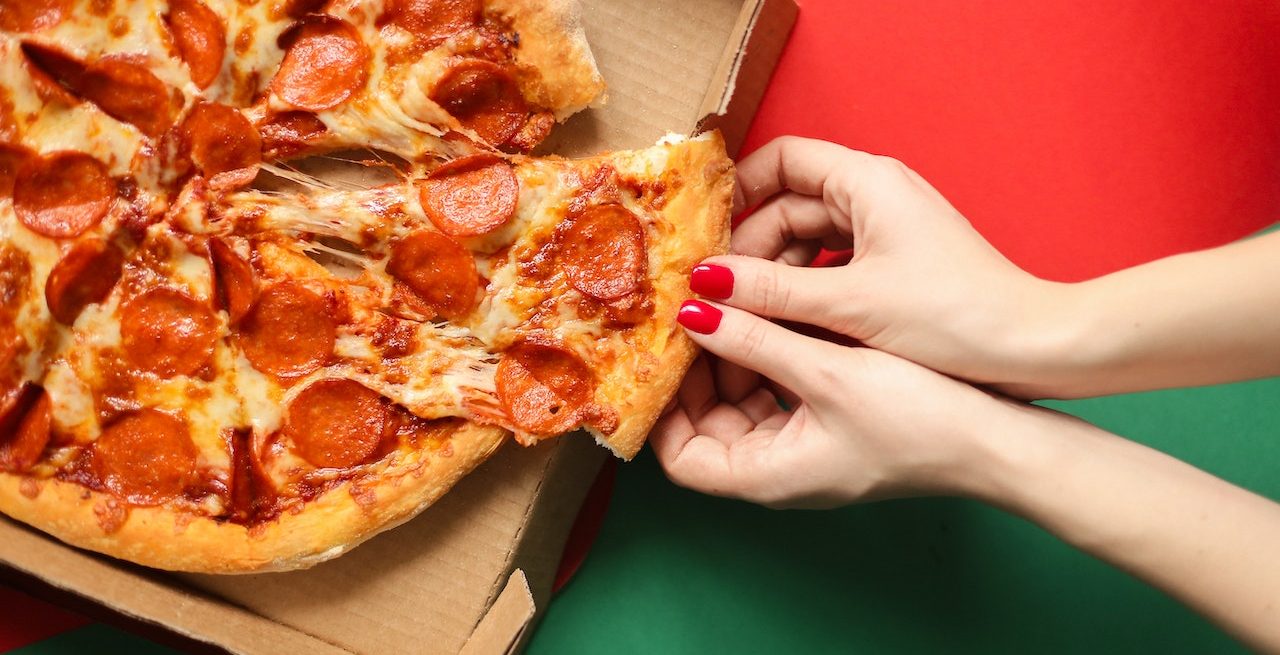Save the Slice – America’s Pizza Legacy Is at Risk
6 Min Read By Papa John Schnatter
To say that small businesses, particularly those in the restaurant industry, have suffered over the past couple of years is an understatement, and unfortunately it doesn’t look like things are getting better any time soon.
Strict pandemic restrictions on customers, a systemic labor shortage, serious supply chain problems, and skyrocketing inflation have already decimated local restaurants — and the threat of significantly higher taxes and more regulations and red tape from Washington, D.C. paint a bleak picture for the future. Unfortunately, headlines show that local pizzerias are being hit hard.
Last year, Coalfire Pizza in West Town, Chicago had to temporarily close due to labor shortages, costing it $5,000. In December 2021, it was reported that New York City’s famed $1 slice pizza joints are at risk of disappearing due to rising costs. That same month, Godfather's Pizza on University Avenue in Des Moines, Iowa, shut down after 44 years in business. In January of this year, famed Chicago pizza place Gullivers closed its doors forever. In February, the popular pizzeria Medusa Stone Fired Kitchen, in Asbury Park, New Jersey, also closed permanently.
Independent local pizzerias have been a mainstay of towns and cities across America for decades, and the fact that they are now at risk of disappearing forever is a tragedy.
As American as Pizza Pie
I’ve been in love with making pizzas since I was a teenager. A pizza is an amazing thing. A textbook example of the beauty of simplicity, the process of making pizza fundamentally sees three of the humblest ingredients on Earth – fresh dough, ripe tomatoes, and cheese — come together into something entirely new and totally delicious.
But pizza is more than that. Pizza is symbolic of America itself. They say there’s nothing as American as apple pie, but I think that there’s nothing as American as pizza pie. I know, I know, the Italians invented modern pizza as we know it. But here’s the thing: oven-fired flatbreads actually date back as far as the times of Ancient Greece and Persia, and while the Italians may have been the first to put tomato and cheese on flatbread, they wouldn’t have been able to if the Americas hadn’t been discovered in the first place.
That’s right, tomatoes are native to our side of the pond, and weren’t introduced in Italy until 1548. And they weren’t used to make what we would recognize as pizza until the late 18th century — right around the time the United States was born. Pizza, like America itself, is the product of cultural exchange between the old world and the new.
As for “American” apple pie? Northern Europeans (particularly the English and the Dutch) brought apple pie to America in the first place, certainly making it no more authentically “American” than Italian-style pizza — which actually uses a native American ingredient!
And though the humble Anglo-Dutch apple pie surely has its place in Americans’ hearts, Italian-style pizza has become a core part of American pop culture and a mainstay of the suburban and urban experience, with numerous diverse regional varieties reflective of the local population and its history.
Take Detroit style, for example, a thick-crust variety rooted in Sicilian pizza that was first made in steel drip trays taken from the city’s famed auto plants. Or New Haven style and its famed white clam pie, a perfect example of Italian pizza skills meeting local, New England ingredients.
Those two examples are just the tip of the iceberg when it comes to America’s regional pizza varieties. There’s also classic New York style, New York Sicilian, New Jersey tavern style, New Jersey tomato pies, Chicago deep dish, Chicago tavern style, California style, St. Louis-style, and more.
Pizza has been a cultural phenomenon since 1953, when Dean Martin released “That’s Amore.” A mainstay of cartoons, television shows, and movies for decades, images of pizza can now be found on all sorts of products – everything from t-shirts and socks to phone cases and backpacks.
Melting Pots of Cheese and Sauce
In addition to representing local traditions and identities, pizza also represents the incredibly important influence immigrants have had on American culture and cuisine.
The roots of pizza as we know it in America go back to the late 1890s, when Italian immigrant and entrepreneur Filippo Milone began establishing proto-pizza parlors throughout New York City. These include the famous Lombardi’s, founded in 1905, and John’s of Bleeker Street, dating to 1915.
We know about Milone thanks to the amazing historical detective work of Peter Regas. “I believe I’ve discovered a forgotten generation of bakers who opened pizzerias over a century ago,” Regas writes. “Of this generation, one baker stands out. Filippo Milone established pizzerias likely in at least six locations in New York City. Of these locations three later became famous under different names: ‘Pop’s‘, ‘John’s’ and ‘Lombardi’s’. ‘Pop’s’ in Brooklyn is closed but the other two in Manhattan still exist to this day.”
These century-old institutions have survived multiple pandemics, two world wars, the Great Depression, 1970s “stagflation,” and numerous other local and national economic downturns. They also inspired imitators in towns and cities across America.
Countless Italian-Americans followed in Milone’s footsteps — including the Fondrisi family, who owned a local Jeffersonville, Indiana pizzeria called Rocky’s Sub Pub, where I first learned and fell in love with pizza-making. I began at Rocky’s as a dishwasher, but from the moment I set foot in the place I knew I wanted to make pizzas.
One night, that chance fell in my lap. At the time Rocky’s was struggling but following a positive review in the Louisville Courier-Journal, the Fondrisi brothers — Joe, John, and Frank — found themselves facing their busiest night ever. Joe asked me if I would step up from washing dishes to making pizza. I eagerly jumped at the opportunity and my life would never be the same.
In the 13 decades since Italian immigrants introduced it to American shores, pizza has become a vehicle for other immigrant cultures to show their influence. Detroit-style pizza traditionally uses Wisconsin brick cheese, and the famed Wisconsin dairy industry wouldn’t exist without the contributions of immigrants from countries like Germany, Switzerland, Holland, and France. In many places in the Northeast, you can find “Greek pizza,” originally created in Connecticut by Albanian-Greek immigrant Costas Kitsatis, and it is now common to find specialty pizzas in restaurants across the country with ingredients from places like Mexico, India, and the Middle East.
Pizza as we know it, just like America as we know it, would not exist without the contributions of the many hard-working immigrants who wanted to come to America, work hard, and earn their slice of the American dream.
An American Dream … For Now
Over a century later, the humble pizzerias first founded by Italian immigrants like Milone have transformed into a global industry worth a whopping $145 billion — with $56.5 billion of that in the U.S. alone in 2021. And that’s the final, and perhaps most important, aspect of America that’s reflected in the humble pizza: the spirit of entrepreneurship and the American dream.
The story of pizza in America is the story of America’s historic commitment to the values of free enterprise and hard work. The success of pizza in America proves that when people freely come together to exchange goods, services, and money for their mutual benefit, wonderful things can happen.
From massive franchises to local mom-and-pop shops, pizza has provided work and prosperity for countless Americans. It gave the Fondrisi family a livelihood, and the ability to pass on their knowledge of pizza making to a young German-American kid who at the time knew as much about Italian food as he did about theoretical quantum physics.
I took that knowledge and in three decades turned a single, small pizza-making operation in the broom closet of my dad’s tavern into one of the largest pizza companies in the world, with over 5,000 locations worldwide, tens of thousands of employees, and billions of dollars in revenue.
Unfortunately, small business owners in the pizza industry may not prosper for too much longer. Although major pizza chains like Dominos, Papa John’s, Pizza Hut, and Little Caesars saw significant sales increases due to the Covid-19 pandemic, the future is looking challenging for local, independent pizzerias. This is illustrated by the shocking statistics that recently came out of New York City — arguably the pizza capital of America.
From 2009 to 2019, jobs in New York City’s restaurant sector rose 61 percent and the number of restaurants grew by 44 percent. But from the end of 2019 to the end of last year, employment in New York City’s restaurant sector fell by more than 25 percent, which translates into around 78,000 lost jobs. This hit was far higher than the national average, but New York also had far harsher COVID restrictions.
I was fortunate enough to follow in Filippo Milone’s footsteps and create a product and brand that spawned thousands of good-paying jobs for people across the country. If the economic course of our country isn’t corrected soon, others may never have the same experience.
Even worse, future generations of American kids may never know the simple joy of meeting up with their friends and going to their local pizzeria to grab a slice. And that would truly be a tragedy. Those of us who have an affection for authentic pizza and wish to save the slice must put pressure on our elected representatives to ensure a positive and prosperous economic environment for independent restaurants. Everyone deserves their chance to have a slice of the American dream. So until D.C. gets its act together, head to your favorite local pizzeria and show them some love – while you still can.


